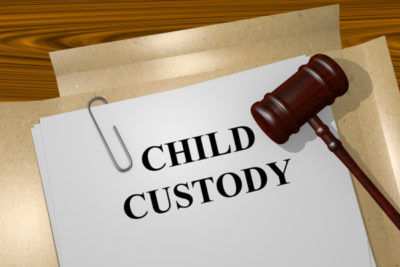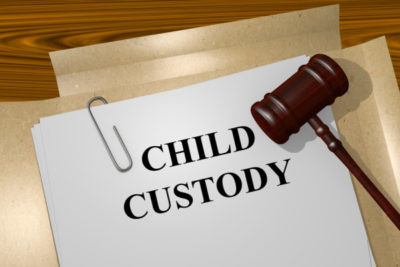Jun 2024
23rd Jun 2024
An Updated Look At California Divorce Statistics in 2024
 During and briefly after the pandemic, California and other states experienced increased rates of divorce. Now, looking back a few years later, what does the landscape look like? Recent divorce statistics for the state were published earlier this year, and the results show interesting, changing trends.
During and briefly after the pandemic, California and other states experienced increased rates of divorce. Now, looking back a few years later, what does the landscape look like? Recent divorce statistics for the state were published earlier this year, and the results show interesting, changing trends. 15th Jun 2024
Red Flags to Look Out For When Shopping for a CA Divorce Attorney
 There are a lot of factors that are likely to impact your divorce outcome in CA. Some of these are not always under your control, but one of the biggest factors that is under your control is the specific attorney or legal counsel that you choose to represent you in your case.
There are a lot of factors that are likely to impact your divorce outcome in CA. Some of these are not always under your control, but one of the biggest factors that is under your control is the specific attorney or legal counsel that you choose to represent you in your case. 10th Jun 2024
Social Media and Divorce Proceedings in 2024
 Year after year, social media continues to play a major role in every day affairs. With the rise of giants such as Facebook, Twitter, Instagram and YouTube, along with newcomers such as TikTok, it seems like everyone is saying their piece on social media nowadays.
Year after year, social media continues to play a major role in every day affairs. With the rise of giants such as Facebook, Twitter, Instagram and YouTube, along with newcomers such as TikTok, it seems like everyone is saying their piece on social media nowadays. 4th Jun 2024
The Potential Effects of Divorce on Your Mental Health
 A divorce can shake your reality and sense of stability to its core. In addition to the emotional and financial distress that comes with such a major life event, there are many ways that a divorce can impact your overall mental health. After all, you’re losing a shared life with a partner that you planned to spend the rest of your life with. This can be emotionally devastating to anyone, even if you initiated the divorce on your end.
A divorce can shake your reality and sense of stability to its core. In addition to the emotional and financial distress that comes with such a major life event, there are many ways that a divorce can impact your overall mental health. After all, you’re losing a shared life with a partner that you planned to spend the rest of your life with. This can be emotionally devastating to anyone, even if you initiated the divorce on your end. May 2024
25th May 2024
Accepting the End of Your Marriage and Moving Forward
 Nobody gets married with the intention of getting a divorce, and it can be devastating to think about the end of something that you truly expected would last a lifetime. Unfortunately, we can’t always control when things or other people change, and perhaps your relationship no longer feels the same. Either you or your partner are more distant, there’s more arguing and contempt, or perhaps they have engaged in behaviors that push your boundaries or are disrespectful in nature.
Nobody gets married with the intention of getting a divorce, and it can be devastating to think about the end of something that you truly expected would last a lifetime. Unfortunately, we can’t always control when things or other people change, and perhaps your relationship no longer feels the same. Either you or your partner are more distant, there’s more arguing and contempt, or perhaps they have engaged in behaviors that push your boundaries or are disrespectful in nature. 15th May 2024
Getting Married Again: Challenges You May Face as a Remarried Couple
 After a divorce, it’s only natural for folks to want to jump back into the dating pool once they feel up for it. Even less surprising, it’s not uncommon for divorced individuals to remarry and give the idea of ever-lasting love another chance.
After a divorce, it’s only natural for folks to want to jump back into the dating pool once they feel up for it. Even less surprising, it’s not uncommon for divorced individuals to remarry and give the idea of ever-lasting love another chance. 10th May 2024
Confronting a Cheater: How to Best Prep for Your CA Divorce
 Finding out that your spouse or partner is cheating on you can be devastating. The severity of the betrayal at the hands of your partner can be highly traumatic. Unfortunately, finding out about any infidelity is just the beginning of a long process for many who are looking to leave their unfaithful spouse.
Finding out that your spouse or partner is cheating on you can be devastating. The severity of the betrayal at the hands of your partner can be highly traumatic. Unfortunately, finding out about any infidelity is just the beginning of a long process for many who are looking to leave their unfaithful spouse. 4th May 2024
Poligamy, Polyamory and Bigamy in CA Family Law
 Generally, most marriages in the U. S. are monogamous and traditionally people are expected to be faithful to their spouse for the long run. This tradition is embedded into the legal system in many states, where cheating on your spouse can actually carry legal ramifications.
Generally, most marriages in the U. S. are monogamous and traditionally people are expected to be faithful to their spouse for the long run. This tradition is embedded into the legal system in many states, where cheating on your spouse can actually carry legal ramifications. Apr 2024
25th Apr 2024
CA Divorce Rates in 2024: The Connection Between Debt and Divorce
 For most couples, divorce is a complicated situation that involves a multitude of factors. However, there are often primary or core issues that serve as the root cause of a given divorce. Research into this area generally tries to pinpoint the main causes of divorce year after year, with certain issues maintaining center stage such as infidelity and financial duress.
For most couples, divorce is a complicated situation that involves a multitude of factors. However, there are often primary or core issues that serve as the root cause of a given divorce. Research into this area generally tries to pinpoint the main causes of divorce year after year, with certain issues maintaining center stage such as infidelity and financial duress. 15th Apr 2024
Arguing Against a Modification of Child Custody in CA
 An unexpected request to modify an existing child support order can quickly turn your world upside down. Potentially losing time with your child and having to rearrange your life to match the new custody order can be harrowing ordeals. Even when you expect the request ahead of time, it can still be incredibly difficult to navigate the potential complications and changes to your life.
An unexpected request to modify an existing child support order can quickly turn your world upside down. Potentially losing time with your child and having to rearrange your life to match the new custody order can be harrowing ordeals. Even when you expect the request ahead of time, it can still be incredibly difficult to navigate the potential complications and changes to your life. 10th Apr 2024
Confronting a Cheater: How to Best Prep for Your CA Divorce
 Finding out that your spouse or partner is cheating on you can be devastating. The severity of the betrayal at the hands of your partner can be highly traumatic. Unfortunately, finding out about any infidelity is just the beginning of a long process for many who are looking to leave their unfaithful spouse.
Finding out that your spouse or partner is cheating on you can be devastating. The severity of the betrayal at the hands of your partner can be highly traumatic. Unfortunately, finding out about any infidelity is just the beginning of a long process for many who are looking to leave their unfaithful spouse. 10th Apr 2024
No-Fault Divorce in CA: Do I Still Need To Collect Evidence?
 California, along with 11 other states, is known as a “no-fault” divorce state. This means that neither spouse needs a reason, or for the other person to be at “fault,” in order to get a divorce. This provides a greater level of flexibility for married couples who are looking to get a divorce, but can also lead to significant misconceptions.
California, along with 11 other states, is known as a “no-fault” divorce state. This means that neither spouse needs a reason, or for the other person to be at “fault,” in order to get a divorce. This provides a greater level of flexibility for married couples who are looking to get a divorce, but can also lead to significant misconceptions. 4th Apr 2024
Who Keeps Rental Properties in a CA Divorce?
 Investing in real estate has always been a hot commodity. Owning one or more properties can provide families with increased financial security, diversification of assets, and as a source of direct income in the case of many rental units. Millions of properties around CA and the country are managed by small, local investors rather than large conglomerates.
Investing in real estate has always been a hot commodity. Owning one or more properties can provide families with increased financial security, diversification of assets, and as a source of direct income in the case of many rental units. Millions of properties around CA and the country are managed by small, local investors rather than large conglomerates. Mar 2024
25th Mar 2024
What Are the Steps for Obtaining a Confidential Marriage License in CA?
 For some couples looking to get married, privacy is of utmost importance. It’s common knowledge that marriages are public information, which might give these couples pause as they plan to tie the knot. For these cases, there’s actually an option available that can help folks preserve their privacy and confidentiality. This is known as a confidential marriage license.
For some couples looking to get married, privacy is of utmost importance. It’s common knowledge that marriages are public information, which might give these couples pause as they plan to tie the knot. For these cases, there’s actually an option available that can help folks preserve their privacy and confidentiality. This is known as a confidential marriage license. 15th Mar 2024
Nurturing Your Self Confidence After Your Divorce
 Discussions involving divorce often focus on the legal and financial challenges that a separating couple might expect to face. Likewise, much of a person’s mind might be focused on custody issues or other family law disputes, and for good reason. However, it’s also important to focus on your mental and emotional well-being.
Discussions involving divorce often focus on the legal and financial challenges that a separating couple might expect to face. Likewise, much of a person’s mind might be focused on custody issues or other family law disputes, and for good reason. However, it’s also important to focus on your mental and emotional well-being. 10th Mar 2024
Child Custody Disputes When a Parent Passes Away
 Losing a parent is a devastating event for a child, who may feel as if their entire world has been shattered. In addition to the difficult emotional hurdles that come with this type of loss, there can be numerous legal and logistical challenges as well.
Losing a parent is a devastating event for a child, who may feel as if their entire world has been shattered. In addition to the difficult emotional hurdles that come with this type of loss, there can be numerous legal and logistical challenges as well. 5th Mar 2024
The Benefits Of Sole Custody in Your California Divorce
 Previously, we’ve discussed how joint custody is the preferred route for the California family laws. The reason for this is that, when the circumstances line up, joint custody carries numerous benefits for the children and parents alike. Thus, the courts are unlikely to default to awarding one parent sole custody unless there is a strong, compelling reason to do so.
Previously, we’ve discussed how joint custody is the preferred route for the California family laws. The reason for this is that, when the circumstances line up, joint custody carries numerous benefits for the children and parents alike. Thus, the courts are unlikely to default to awarding one parent sole custody unless there is a strong, compelling reason to do so. Feb 2024
28th Feb 2024
The Positive Impact that your Divorce Can Have On Your Kids
Conversations around divorce often emphasize the negatives, including the emotional and financial struggles that accompany a divorce. These conversations also often focus on how the divorce is sure to have a deeply negative effect on any involved children.
20th Feb 2024
Can Kids be Separated in a California Custody Agreement?
 As parents move towards a planned (or unplanned) divorce, figuring out a custody agreement is often a crucial next step. This custody agreement helps parents sort out difficult custody issues such as where the children will reside, how visitation arrangements will work, what parental responsibilities get assigned to who, and more.
As parents move towards a planned (or unplanned) divorce, figuring out a custody agreement is often a crucial next step. This custody agreement helps parents sort out difficult custody issues such as where the children will reside, how visitation arrangements will work, what parental responsibilities get assigned to who, and more. 10th Feb 2024
Tips to Minimize Arguments During the CA Divorce Process
 Tensions are always especially high during the divorce process, and the odds of amicable discussions are slim to none. In fact, it’s much more likely for you and the ex to break out into an argument, whether you’re working through your divorce via mediation, having a quick meeting with both lawyers present, or squaring up in a courtroom hearing.
Tensions are always especially high during the divorce process, and the odds of amicable discussions are slim to none. In fact, it’s much more likely for you and the ex to break out into an argument, whether you’re working through your divorce via mediation, having a quick meeting with both lawyers present, or squaring up in a courtroom hearing. 5th Feb 2024
Helping Your Children Adjust to Two Separate Households
 Adjusting to post-divorce life is challenging for parents and children alike. Kids who are used to having their entire world under one household may now find themselves shuffling across two or more households, and this adjustment can be very difficult for even the most adaptable of kids.
Adjusting to post-divorce life is challenging for parents and children alike. Kids who are used to having their entire world under one household may now find themselves shuffling across two or more households, and this adjustment can be very difficult for even the most adaptable of kids. Oct 2023
25th Oct 2023
CA Family Law: Ways Separate Property Can Become Community Property
 As we’ve covered in previous posts, CA is a community property state. What this entails is that during the asset division process of your divorce, the CA family law courts will typically split everything that was accumulated during the marriage between you and the ex. This includes assets as well as debts, and the goal is for the distribution to be equitable for both parties.
As we’ve covered in previous posts, CA is a community property state. What this entails is that during the asset division process of your divorce, the CA family law courts will typically split everything that was accumulated during the marriage between you and the ex. This includes assets as well as debts, and the goal is for the distribution to be equitable for both parties.15th Oct 2023
Gaslighting in your CA Divorce: Signs to Look Out For
 The term gaslighting has gained momentum over the years, and the term itself has become part of everyday usage. As is often the case with many widely-used terms, the definition of gaslighting can be a bit loose depending on how it is being utilized in conversations. That said, gaslighting is a specific concept with a well-defined definition.
The term gaslighting has gained momentum over the years, and the term itself has become part of everyday usage. As is often the case with many widely-used terms, the definition of gaslighting can be a bit loose depending on how it is being utilized in conversations. That said, gaslighting is a specific concept with a well-defined definition.10th Oct 2023
Fighting For Full Custody in CA? Here Are Some Tips to Follow
 Trying to attain full custody in California is often an uphill battle. As we’ve covered in previous blog posts, the state of California will always push for shared custody, as it has been demonstrated that having both parents actively engaged in a child’s upbringing is beneficial for not just the child, but for all involved parties as well. The courts will sometimes grant full custody, but only if and when the circumstances dictate that this is the best course of action for the child.
Trying to attain full custody in California is often an uphill battle. As we’ve covered in previous blog posts, the state of California will always push for shared custody, as it has been demonstrated that having both parents actively engaged in a child’s upbringing is beneficial for not just the child, but for all involved parties as well. The courts will sometimes grant full custody, but only if and when the circumstances dictate that this is the best course of action for the child. 